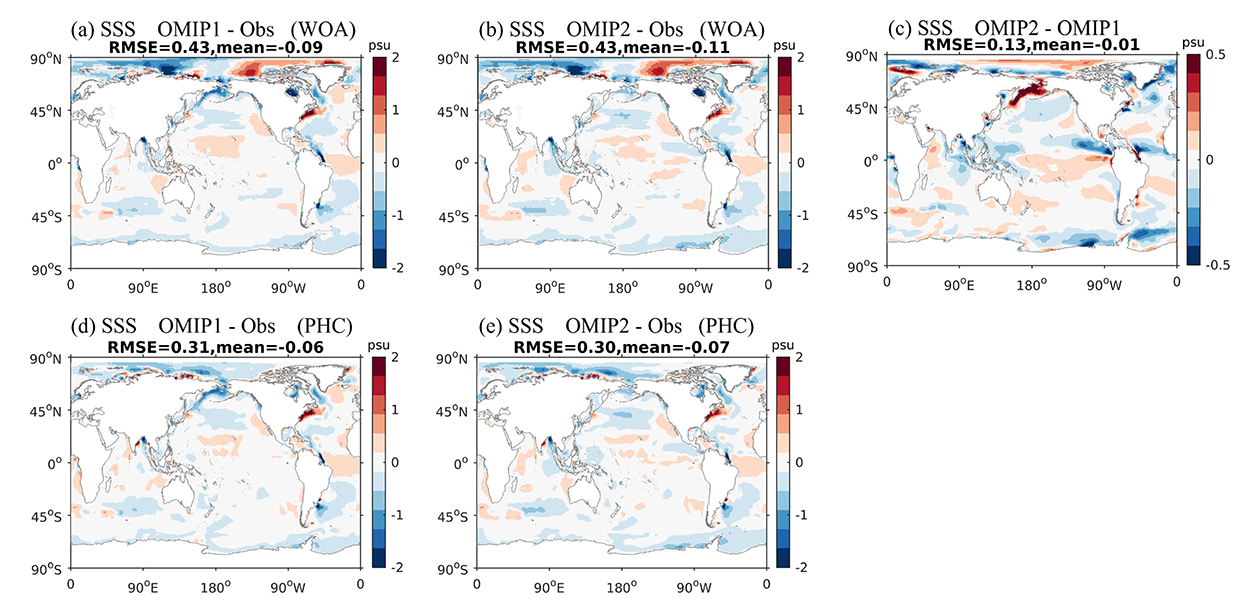▎Achievements
Participation in Coupled Model Intercomparison Project 6
Taiwan Multi-Scale Community Ocean Model’s First Global Engagement

(a) Spatial pattern of March and September SIC (%) in OMIP2 during the last 30 years (1980–2009) of the OMIP1 experiment. Pink lines are contours of 15% ice concentration (observations are superimposed as black contours). (b) Differences between the OMIP2 and OMIP1 experiments.
During the past decade, Prof. Yu-Heng Tseng of the Institute of Oceanography, College of Science, has led a local research team in developing the high-efficiency Taiwan Multi-scale Community Ocean Model (TIMCOM). His team originally developed TIMCOM in Taiwan as a accurate regional ocean model to simulate the regional circulation in the western North Pacific. More recently, advanced features, including the meso-scale parameterization, vertical turbulent mixing and a sea ice model, were incorporated within TIMCOM to simulate the global ocean and sea ice changes. TIMCOM was the first major contribution in Taiwan to the Ocean Model Intercomparison Project (OMIP) under phase 6 of the Coupled Model Intercomparison Project (CMIP6) for IPCC assessment reports.
TIMCOM is participating in OMIP experiments as part of CMIP6. This project compares the results of two ocean–sea ice model experiments: (a) OMIP1, forced by the Coordinated Ocean-Ice Reference Experiments Phase II data (1948–2009), and (b) OMIP2, forced by JRA55-do data (1958–2018). The observed annual means and the interannual variability of physical states are well captured in the TIMCOM results of both experiments with much improved mean temperatures and salinities in OMIP2. The weaker winds and stronger freshwater discharge in the OMIP2 forcing were responsible for some of the differences between the OMIP1 and OMIP2 simulations. Many patterns and biases were found to be similar to those found in other modeling efforts, confirming the common systemic biases. However, this study disclosed several unique features, such as the recent increase in Atlantic Meridional Overturning Circulation (AMOC) that has been observed during the last decade and a generally higher Drake Passage transport. The enhanced AMOC can be explained by a recent cooling event over the North Atlantic, which thermally increased surface density flux. The higher Drake Passage transport compared to observations was possibly linked to a stronger bottom cell of meridional circulation and a smaller Antarctic sea-ice extent.

AMOC transport at 26.5°N in the last cycle of the OMIP2 experiment (blue) and RAPID observations (black) (units: Sv). The 5-year running mean of the annual mean density flux over the North Atlantic (45–65 °N) is superimposed (red). The total density flux is separated into thermal (green) and haline (yellow) components.

Spatial pattern of (a) OMIP1 SSS biases (psu), (b) OMIP2 SSS biases (psu), in terms of the deviation from the WOA13 climatology. The last 30 years (1980–2009) of OMIP1 are used for a fair comparison. (c) The difference between OMIP2 and OMIP1 SSS biases. (d) OMIP1 SSS biases (psu), and (e) OMIP2 SSS biases (psu) but the model outputs are compared to the PHC2 climatology.

